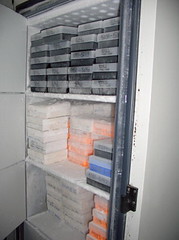 Just to let you know that postdoc Susanne Bauer in our ‘Biomedicine on Display’ research group has published a new paper on data mining in epidemiology.
Just to let you know that postdoc Susanne Bauer in our ‘Biomedicine on Display’ research group has published a new paper on data mining in epidemiology.
“Mining data, gathering variables and recombining information: the flexible architecture of epidemiological studies” is available in the December issue of the journal Studies in History and Philosophy of Science Part C: Studies in History and Philosophy of Biological and Biomedical Sciences, vol. 39 (4): 415-428 (2008).
Here’s the opening paragraph of the conclusion:
This paper has approached epidemiology as a practice of collecting and traced selected data trajectories of a large-scale cohort study. The analysis of two re-assemblages of data from the Østerbro study—in aetiological studies of breast cancer—has exposed the role of data mining and record linkage in stabilising biomedical knowledge at a population level. Various data strategies of epidemiological research practice can be described: active gathering of new variables and samples in a defined study design is key to large-scale prospective follow-up studies. Mining data from registries refers to the deployment of already existing data—data recorded in other contexts but used for epidemiological research—such as routine data, for example social statistics, cause of death data, or, in the case of the Nordic countries, data from central population registries. Recombining information entails a re-assemblage of data into novel constellations, which re-evaluate determinants and outcomes based on molecular techniques. In these re-arrangements, data travel over time, across levels and context of investigation, whilst they continue to carry on contextual categories.
Read the full paper here.
(Pic above: Frozen samples of the Copenhagen City Heart Study – photo by Susanne)


